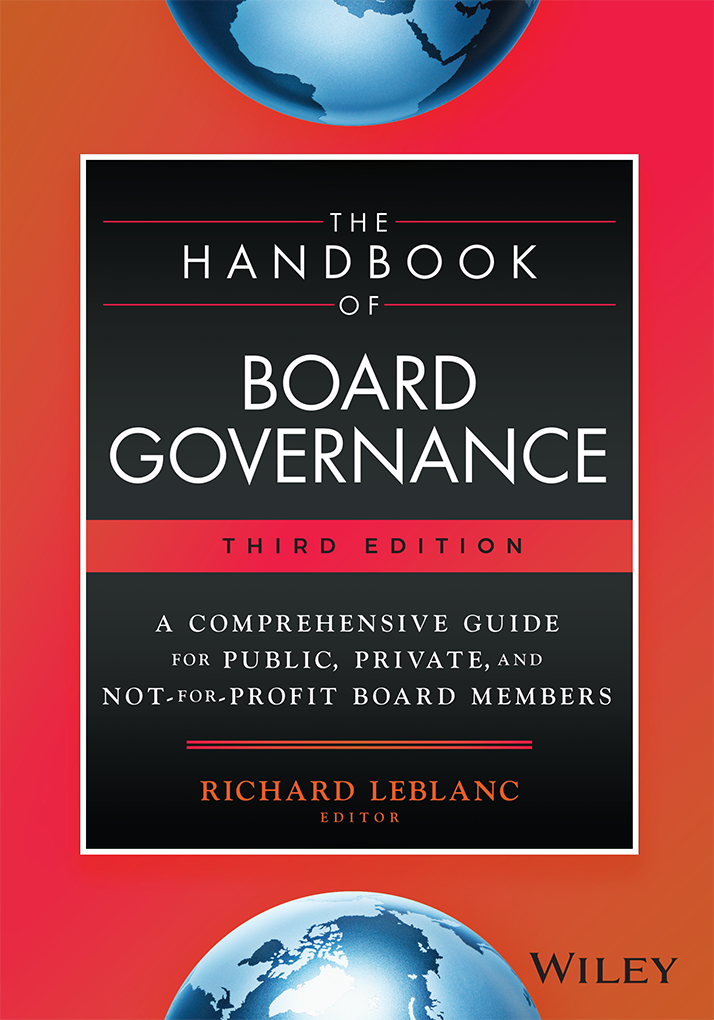The governance of executive compensation by boards continues to be in headlines. Regulation has emphasized the independence of compensation committees and consultants, similar to what Sarbanes-Oxley did for audit committees and auditors. However given the occupy movements and wealth disparity, more regulations emerge including potentially binding say on pay by shareholders and diversifying compensation committees and boards. The following are 10 areas leading compensation committees and advisors (including lawyers and compensation consultants) should look to, to get ahead of emerging regulations.
I offer several suggestions for reforming executive compensation based on current and emerging regulation and best practice, including interviews with directors, reports to regulators and work with leading compensation committees and boards. I address committee member and compensation consultant independence (Dodd-Frank), the closed shop nature of pay setting and diversity (UK), risk-adjusted compensation (Basel), clawbacks and malus (Dodd-Frank, UK, Basel), pay-for-performance (US to come, UK current), shareholder engagement and binding votes (US, UK to come), pay equity and disparity (US and UK to come), CEO succession and director pay (general and the NACD).
For those compensation committees and their advisors who wish to get ahead of the curve, here are ten suggestions, independently and constructively offered.
1. Independent Members
Committee independence should exceed black-letter requirements, i.e., members should be reasonably seen to be independent from the outside, and assessed anonymously by fellow directors from the inside. Interlocks, prolonged tenure, personal relations, service provider associations, perks and subtle conflicts should all be addressed.
2. Compensation Literacy and Closed Shop Pay-Setting
A skills and diversity matrix should be used for the Committee. Compensation literacy, expertise and industry knowledge should be defined and met by members. The Committee should not be homogenous. At least one member should be a woman. Non-CEOs and first time directors should also sit on the Committee.
3. Independent Advisors & Resources
The Committee should have explicit access to unconflicted qualified advisors who work for the Committee. If an advisor’s colleague seeks to do, or has done, work for the company, that advisor should not be retained. The consulting industry has not done an adequate job of addressing conflicts and professional standards and further regulation is coming. There should be no undue funneling by management in advisor retention.
4. Risk-Adjusted Metrics
Compensation consultants, if used, should be instructed by the Committee to incorporate explicitly risk-adjustment into proposed metrics and adjustments ex post (after the fact) prior to vesting of deferred cash and instruments. The Committee should understand how to do this, consistent with best practice. If not, it should get independent advice, per item 3.
5. Proper Clawbacks and Malus
If these clauses cannot be drafted by the Committee itself, they should not be drafted by management or internal or external counsel (who are conflicted by being self interested or assessing their own work), but by an independent advisor (see item 3) consistent with best practice and industry standards.
6. Pay-for-performance Linkage
Management prefer short-term, quantitative, formulaic pay plans. Regulators explicitly want compensation committees now to incorporate qualitative, longer-term metrics, pay periods and discretion. More rules are forthcoming but compensation committees need to be able to understand the business model, the key strategic drivers and get this right so pay equals performance. This has not happened in several instances. Re-cutting pay plans is emotional and adverse so compensation committees need courage and resources at least equal to that of management.
7. Meaningful Shareholder Engagement and Binding Votes
The Committee should meet directly with key shareholders without management present on a regular basis. Binding votes on pay are forthcoming. Conflicts of interest among institutional investors and asset managers and other barriers to engagement will likely be addressed. Boards should prepare for direct shareholder engagement and voting on a broad basis using technology in the future.
8. Pay Equity and Disparity
The use of peer groups (vs. CEO rankings) and at the 50th, 75th or 90th percentile have resulted in a perpetual compounded 17% increase in CEO pay overall. This increase results in a significant disparity not only in the C-suite (depending) but also with the average worker. When ratios emerge, committees should scrutinize and act as appropriate. This disparity is part of public and regulatory parlance now. Inaction is resulting in regulation.
9. Succession Beyond CEO
Boards increasingly should want to see a deep talent bench for key units and functions, beyond the CEO. CEOs resist, including in their own succession but boards should persist. Succession should be part of the pay package for intransigent CEOs. Proper CEO succession mitigates excessive executive compensation payouts.
10. Director Pay
Lastly, management has an interest in paying directors beyond what is required for a part-time job, including for non-executive chairs. Committees need to push back on exorbitant pay that can be reasonably seen to compromise their own independence. In the US, for example, the NACD had recommended a 15-16% premium for Lead Directors, specifically to guard against compromising of independence. This premium is much lower than 2X or 3X seen for non-executive chairs, and the spirit of director pay overall.
Ten years after the enactment of Sarbanes-Oxley (S-Ox) following Enron and WorldCom, S-Ox’s legacy has been the independence and proper reporting to and oversight by audit committees. However one American governance commentator remarked that “S-Ox is kindergarten compared to this,” “this” meaning the sheer volume of corporate governance change as a result of the financial crisis. When we look back at the legacy of the corporate governance reforms following the financial crisis, they will be in three main areas: compensation, risk and shareholder rights. We are probably not even through half of the changes, nor have compensation committees adjusted to them.












